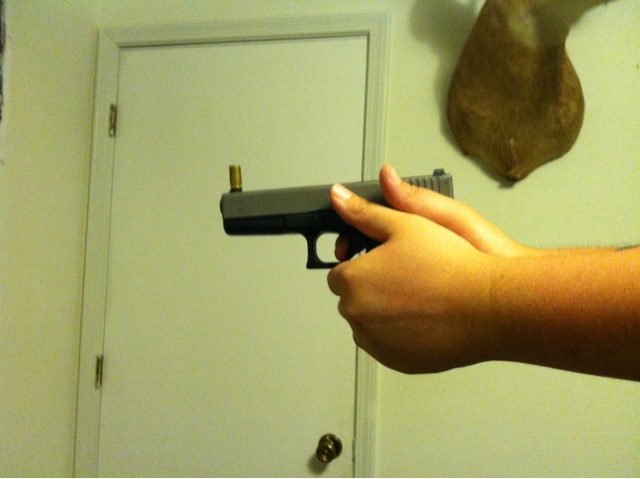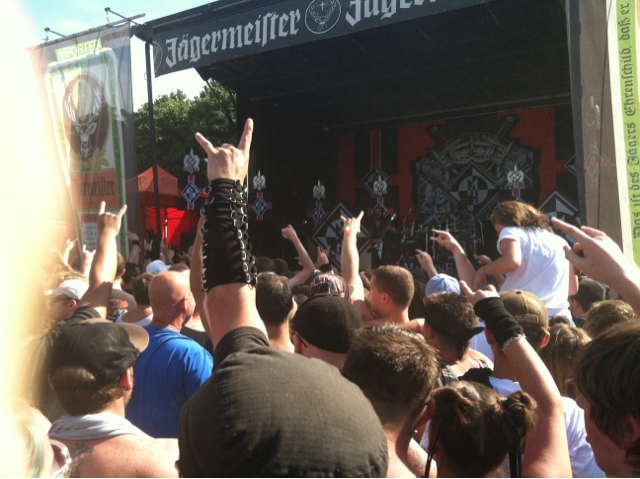If you have been thinking about getting
your carry permit and carrying a gun for self defense, here is a list
of things to consider and the basics of what you will need. This is
intended to be a basic guide, you should research each of these
points in depth. This is a minimum list, and doesn't include things
like flashlights and knives that you should also carry on a daily
basis.
Mindset:
There are a couple of things to
consider before you start carrying a gun for self defense. The first
is, if you get put into a situation where you need to use your gun,
do you think you will be able to take that person's life? Sure, he
will probably run away as soon as you draw but what if he/they don't?
You have to come to grips with this before hand. If you don't think
you can end human life then carrying a gun is not going to be for
you.
After you come to grips with that you
need to learn when you can and can't shoot, where you can and can't
legally carry, and when you should get involved with 3rd
party situations(the answer is never, unless something that shocks
humanity is going on.) If you intervene in a man beating a woman,
she may press charges against you for hurting her husband. Carrying
a gun doesn't make you a cop, or a hero, and the act of carrying a
gun isn't a magic talisman that wards off evil.
Mindset is a huge subject and is hard
to fit in one bullet point. People have written articles, and even
entire books on just this one subject. I suggest finding some of
these and studying them.
Carry Permit:
In most states, you will need to get a
permit to legally carry a gun. Requirements vary wildly state by
state so check with handgunlaws.us to see what you need to do. There
are a few states where a permit is not needed such as Arizona and
Vermont.
Gun:
You don't have to go super expensive
and spend $3000 on a custom 1911, and I actually suggest you don't.
But at the same time, you should spend enough to get a quality
firearm. I have owned several of the super cheap pistols available
on the market. They are fine for range toys if they work at all.
Most don't. After all, if you are carrying a gun for self defense
and you need to use your firearm, it will be in a life or death
situation. I would suggest a Glock in 9mm. However, people are different, so I would suggest trying some different guns out if you can. Most ranges have guns you can rent and shoot. The key here, is the shooting. A lot of the tiny pocket guns that people love are a good bit more difficult to shoot WELL. Whatever you choose, put in the time to become proficient with your weapon. Anything from .380 acp
to 10mm will be ok, although there are pros and cons to each. Don't
get too carried away by caliber or bullet weight. All handgun rounds
suck at stopping people. The old way of thinking was to use the
biggest reasonable caliber. I would rather use a slightly smaller
caliber and shoot them a whole bunch. This is one of the places
magazine capacity comes into play. Another is multiple bad guys.
9mm to me has the best overall package
of sufficient power, pistol size, magazine capacity, and light
recoil. It is also the cheapest to shoot, allowing you more practice
for the same amount of money.
Ammo:
Pretty much any modern, quality
defensive ammo will do fine. Speer Gold Dots, Winchester Ranger SXT,
Hornady Critical Defense are a few good examples. You do want to use a quality hollow point. They have slightly better stopping power, leave a bigger hole, and are less likely to over penetrate and hit people behind the bad guy.
Holster:
You need a quality holster, that is made for your model gun. Holsters that are "one size fits many" usually aren't very good. You will see that a lot in the cheap nylon holsters. The
leather/kydex hybrid holsters such as the Crossbreed SuperTuck and
the Aegis Armory are the most comfortable IMO. There are several
companies that make these, and most of them are good. Check reviews
before you buy. Full kydex holsters are good as well. If you want
to carry concealed(and you do) then an Inside the Waist Band(IWB)
holster will conceal much easier.
You want to be able to get a full firing grip on your pistol from the holster. Your adrenaline is going to be pumping and fixing your grip after the draw isn't likely to happen.
Most people end up going through a few holsters before they find the one that is right for them.
Belt:
A good gun belt makes carrying much
easier. A quality reinforced belt will hold the weight of the gun
better than a crappy Walmart belt. Look for reinforced nylon such as
the Wilderness Tactical 5 stitch Instructor belt or double thick
leather such as those made by Beltman.
Clothing:
You don't have to buy specific clothes
to carry a gun, but you do need to make sure what you wear works. If
you are using an IWB holster you may need to go up a size in pants to
make room for the gun and holster. Tight fitting shirts will allow
the gun to show when you don't want it to. Loose, dark colored
T-shirts and button up shirts work much better at hiding the gun.
Training:
Formal training is not required
past the class you may need to take to get your permit. I have an
article
here discussing the pros and cons of taking a defensive
pistol training class. Cliff notes version: Get it. As much as you
can.
Practice:
You need to practice! Everything from basic marksmanship to drawing from concealment, get off the X drills, shooting while moving. Some of this can be practiced with
dry fire in your home. Some of it you have to get to the range and put the time in.
Overall, the decision to start carrying a gun for defense is a pretty big one. It requires a commitment and learning from you. There is a little more to it than just throwing a .38 in your pocket. You need to be proficient with your gun BEFORE you need it. You need to be safe with your firearm, make sure you have the 4 safe gun handling rules learned and ingrained. I hope this article is a good starting point for you. Feel free to leave me any questions or comments you may have.
~TattooedGunner
























































